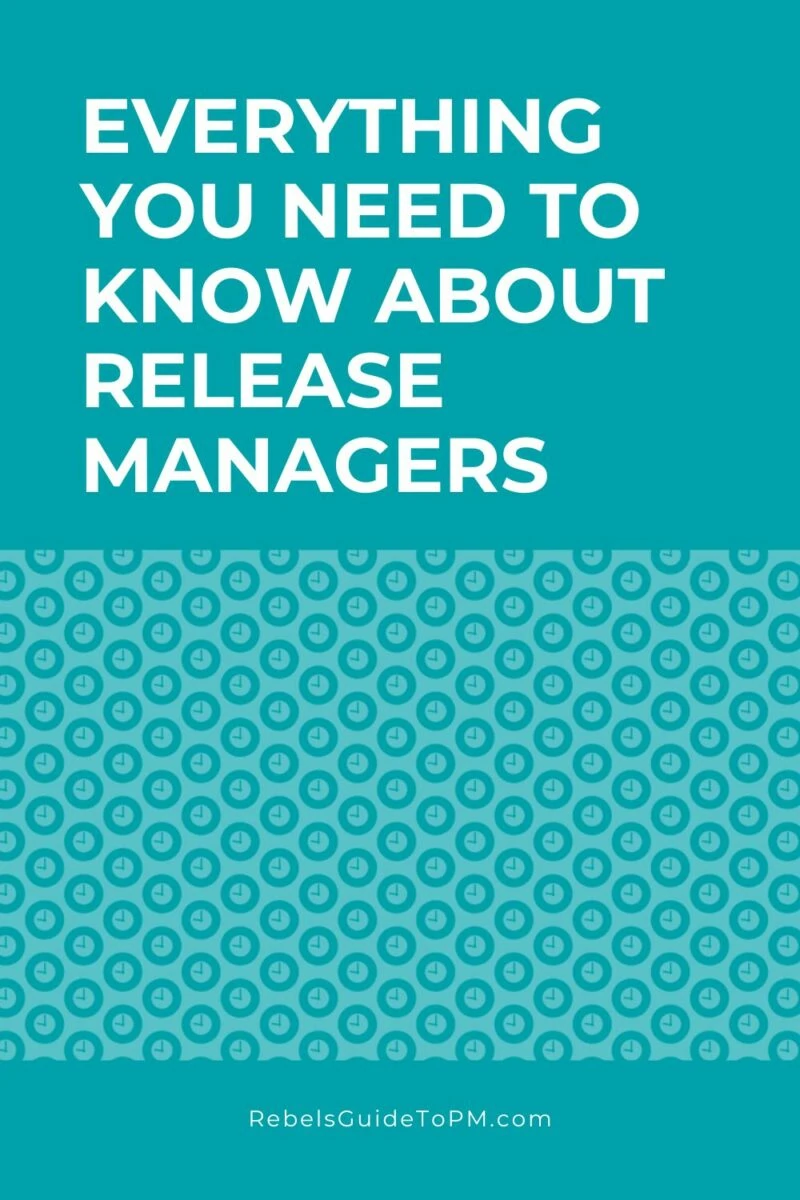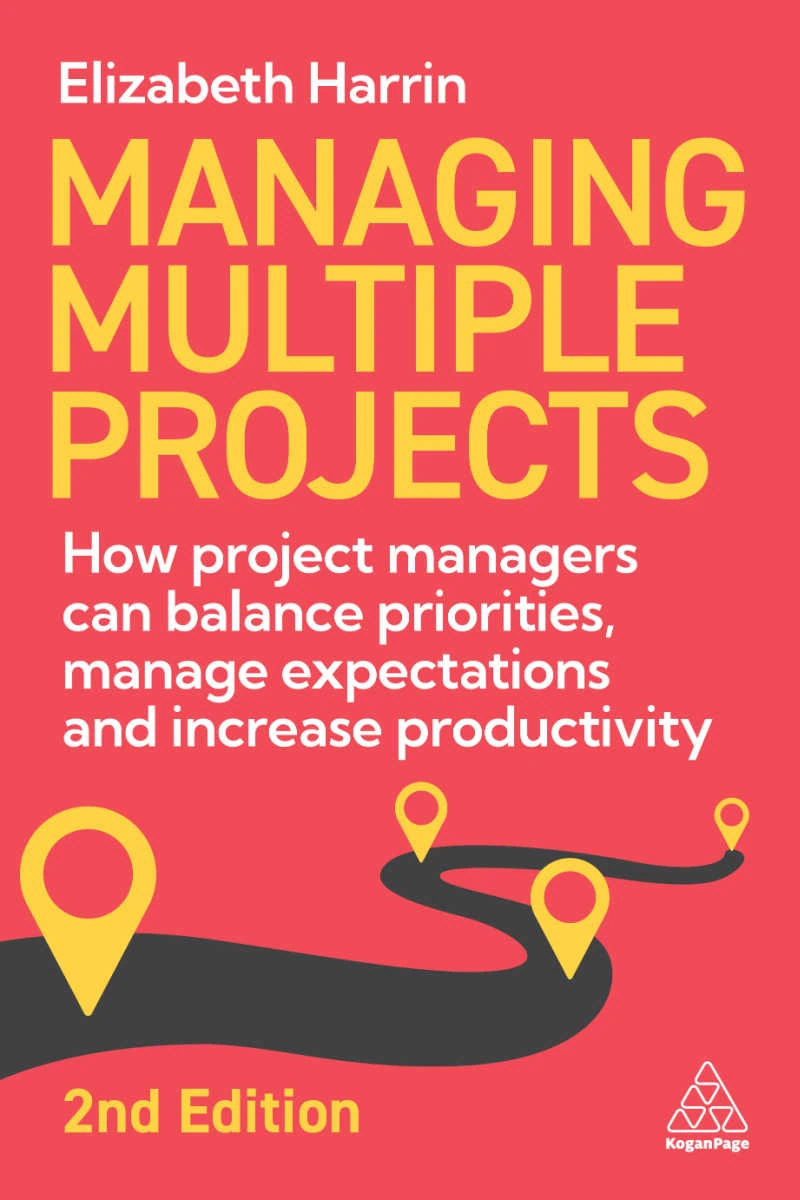Everything You Need to Know About Release Managers
Do you have a release manager on the team? Or are you wondering whether it would be a pretty good job to move into?
It wasn’t until I worked in IT as a project manager that I had a lot of contact with the release management process. My software projects needed releasing, so we had to follow the formal process and engage with the release manager to make sure that the bug fixes and new features got pushed to the production environment in a controlled way.
It’s an essential role… because without her, we risked putting any old thing live and ending up with software conflicts and no process to roll back changes if we messed up.
In this article, I’ll explain what a release manager does and what skills you need to make a success of this role.
The role of a release manager is crucial in ensuring that software projects are completed on time and within budget.
What does a release manager do?
Release managers are responsible for coordinating the release of new software versions and ensuring that all stakeholders are aware of and prepared for the changes.
They work with development teams to track progress and identify potential risks, as well as liaise with other departments such as QA, ops teams, service management, and support. They ensure that new versions of software are released on schedule and without any major issues.
So what does a typical day in the life of a release manager look like?
The day could be quite varied. The release manager at my last job worked closely with the development team to review what code changes would be coming. She attended the Change Advisory Board, so she was aware of what requirements would be coming. She understood how each change impacted the projects and would help prioritize.
Once everything looks good from a technical standpoint, the release manager could start working on preparing communications about the upcoming software change. The comms may come from the project team or a functional consultant, or via the minutes of the CAB, or another mechanism.
On launch day itself, the release manager will be closely monitoring things behind-the-scenes to ensure that tech implementation goes smoothly.
They may also need to provide customer support if there are any issues reported after launching changes. And then the cycle begins again!
We had a fortnightly release (and therefore a giant scrabble to try to get your changes in before the cut-off and presented to the CAB in time), but your company might have monthly releases or use a different cadence.
Key roles and responsibilities of the job
As a release manager, there are three key areas of responsibility: planning, scheduling, and coordination.
Planning
The role involves planning the release scope (the contents of what’s going in). In my experience, they try to make sure there is balance and that different projects get a chance to get their projects in the code updates. They also make sure that there is a rollback plan in case something goes wrong.
You’ll need an understanding of the software development lifecycle and analytical skills will help you stay on top of how changes are impacting the different environments.
Scheduling
They are responsible for ensuring that new features or products are released in a timely and efficient manner. That work has to be scheduled. There will be a release calendar that they stick to.
They’ll also be responsible – or contribute to – the decisions around code freezes at certain times of the year. For example, we have a code freeze at Christmas as there are a lot of staff off or working fewer hours for the holiday season. So that we don’t have to call people in to fix bugs or roll back changes, we simply don’t do releases for a period over the final few weeks of the year and the first week of January.
Coordination
Release managers work with development teams to make sure all code changes go through proper testing before being released into production. They’ll work with project teams as well.
In addition, they also create and maintain documentation for each cycle, in the release repository. This ensures that all stakeholders have access to information about upcoming releases and their corresponding timelines.
The documentation is also useful if you want to know what code change failed in the release or what clashed with what and needs to be backed out (not that I’m speaking from experience or anything!)
Key skills for the role
You have to be technically-minded, with good technical skills. Our release manager was previously a tester, so she fully understood the different environments and how code made its way between them.
Soft skills are also important because there’s a lot of communication, negotiation, and stakeholder expectation management to do.
You also need to be confident and a little bit tough. Because plenty of project managers like me will ring you at the last minute begging for their changes to be put in because they’ve just been approved via an emergency CAB, and they can’t wait for the next spot in the release pipeline!
Where a release manager sits in the organization
The role of the release manager is crucial to the software development process, so you’ll normally find the role in the IT or Technology team, working in an apps or software development function.
While the role most often sits in the IT function, it has close links with product management (which often isn’t part of the IT function).
Release managers play an important role in managing risk during the software development process – because no one wants buggy software in prod.
By coordinating testing and deployments, they can help reduce the likelihood of errors or unforeseen issues arising when new code is introduced into production systems.
In doing so, they help protect the stability and reputation of the software development team.
The benefits of being a release manager
Release managers are often the unsung heroes of software development projects! They’re the gatekeepers of the current code and the first to know when something has gone wrong. When you look at it like that, it’s a pivotal and important role, with a very specific yet essential skill set.
Here are three career benefits of the role.
1. Being a key part of the team
If you enjoy working with people, this is a good role for you. Yes, it’s tech, but it’s not the kind of job where you work solo.
As the coordinator between different team members working on various aspects of a project, you play an integral role in making sure everything comes together seamlessly for each release.
A successful launch can be attributed in large part to an effective release manager who kept everyone and everything on track leading up to it.
2. It’s always something new
Well, this might be obvious. Every change is something new. Projects bring new requirements to core software systems. There’s more to learn, more to understand, and the role is varied.
If you’re bored easily or thrive off change, this is definitely the job for you! No two days (or even two hours) will ever be alike, as priorities constantly shift throughout the course of any given project.
4. Remote work options galore!
In many cases – though not all – remote work is an option. So much of software development can be done from wherever these days. It’s no longer necessary for agile teams to be co-located, either.
Software changes can be packaged and deployed remotely too. And the CAB meetings have always been conference calls for us unless the members of the CAB happened to be on-site at the same time.
How to become a release manager
So does this sound like a job you’d like to try out? Assuming you want to become a release manager in the software development industry, there are a few things you should know.
First and foremost, being a release manager requires strong organizational skills. You must be able to keep track of multiple projects at once and ensure that they stay on schedule. You’ll have a release management tool and templates to help with that, but it’s worth understanding that attention to detail and being able to keep several plates spinning at once is going to make it easier to do the job.
If I haven’t managed to put you off the job, I’d suggest starting with getting some project experience in the software field so you can see tech development first-hand. This will give you a better understanding of what goes into developing software and how to manage different aspects of the process.
Additionally, it is helpful to learn about project management tools and practices so that you can more effectively coordinate releases. A lot of software teams use
From within the tech team, you might be able to make a lateral move into release management. There’s no harm in trying direct entry as well. Check out the job adverts for the exact requirements of roles near you.
More questions answered
What is the salary of a release manager?
The average salary for a release manager is approximately $89,000 per year in the United States.
What is the role of a release manager in
The role of the release manager in
They also work with other teams involved in the project, such as development, QA, and operations, to ensure that each release is smooth and successful.
Could you do the job?
If you’re considering a career as a release manager, hopefully, this article has given you a better understanding of what the role entails and what skills are needed to be successful.
Release managers play an important role in ensuring that software projects are completed on time and without any major issues.
If you have strong project management skills and enjoy working with teams, then being a release manager could be the perfect job for you.
Pin for later reading


